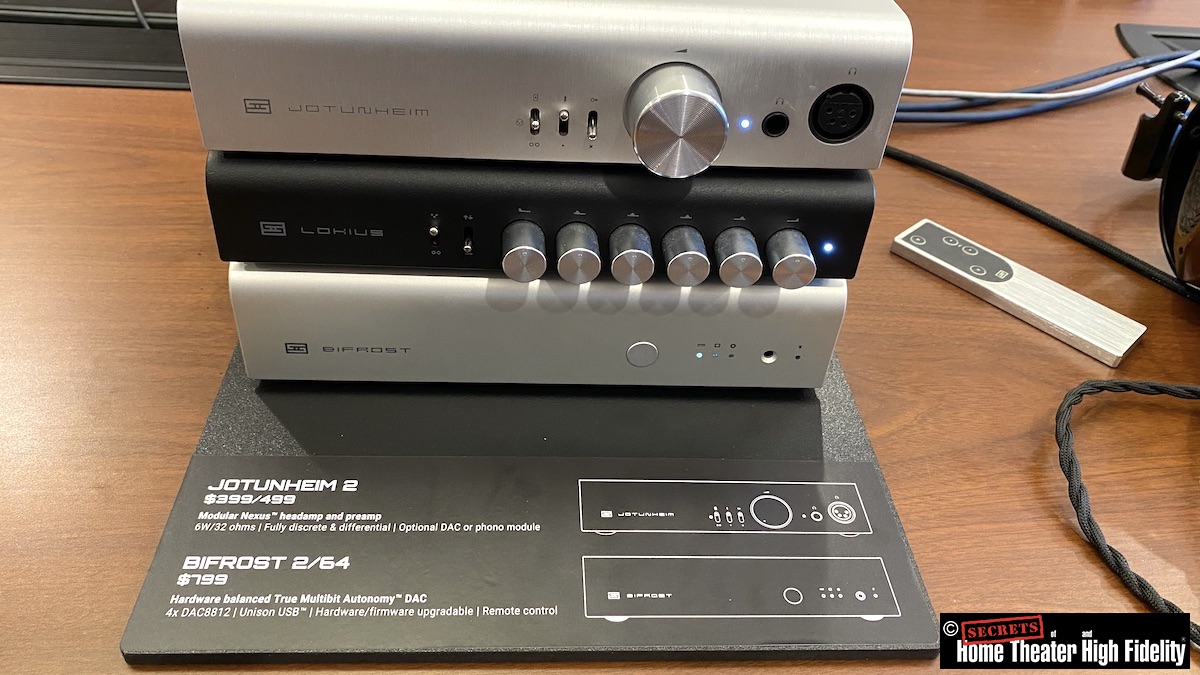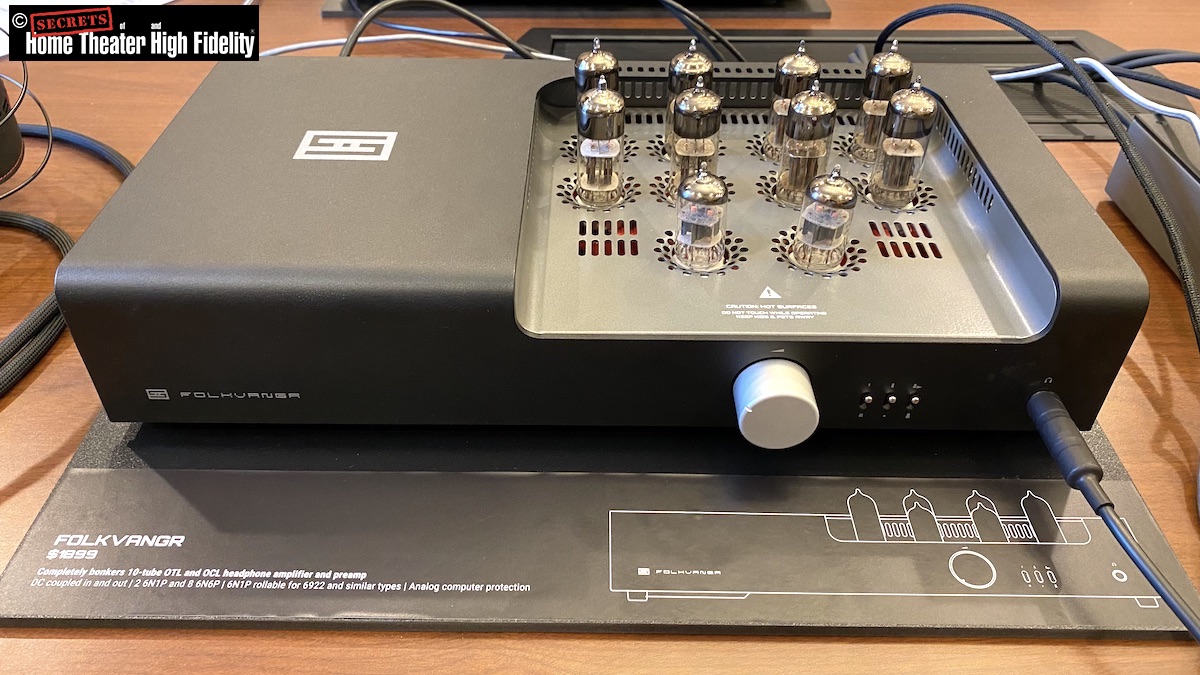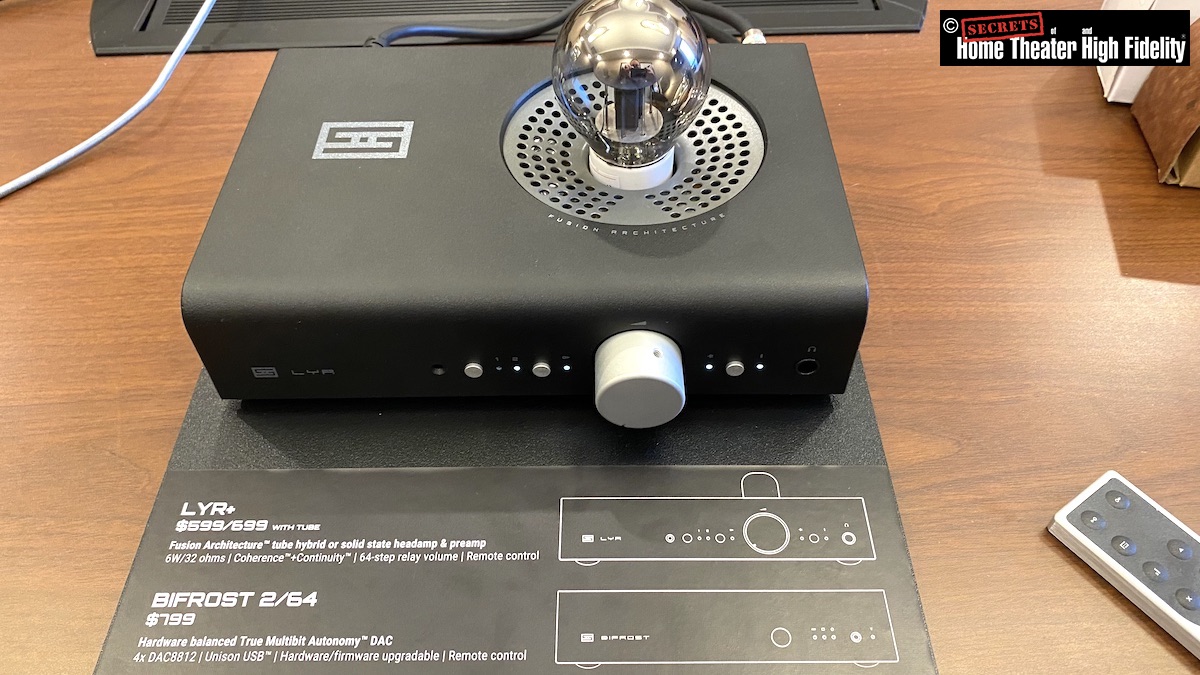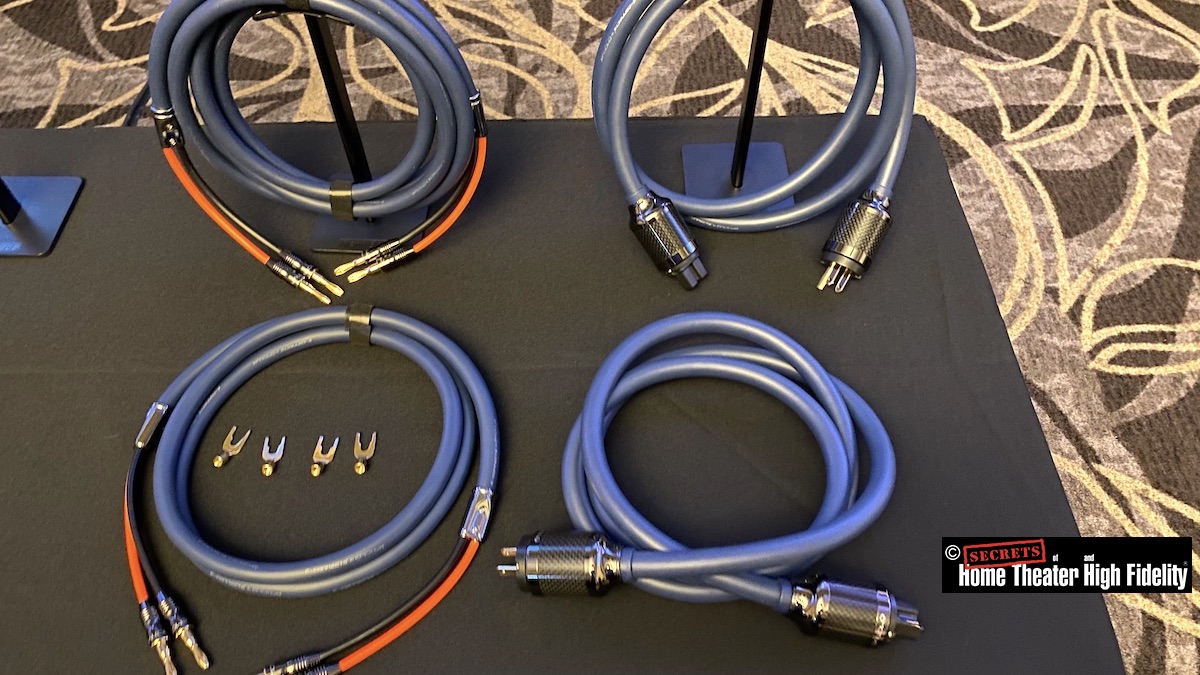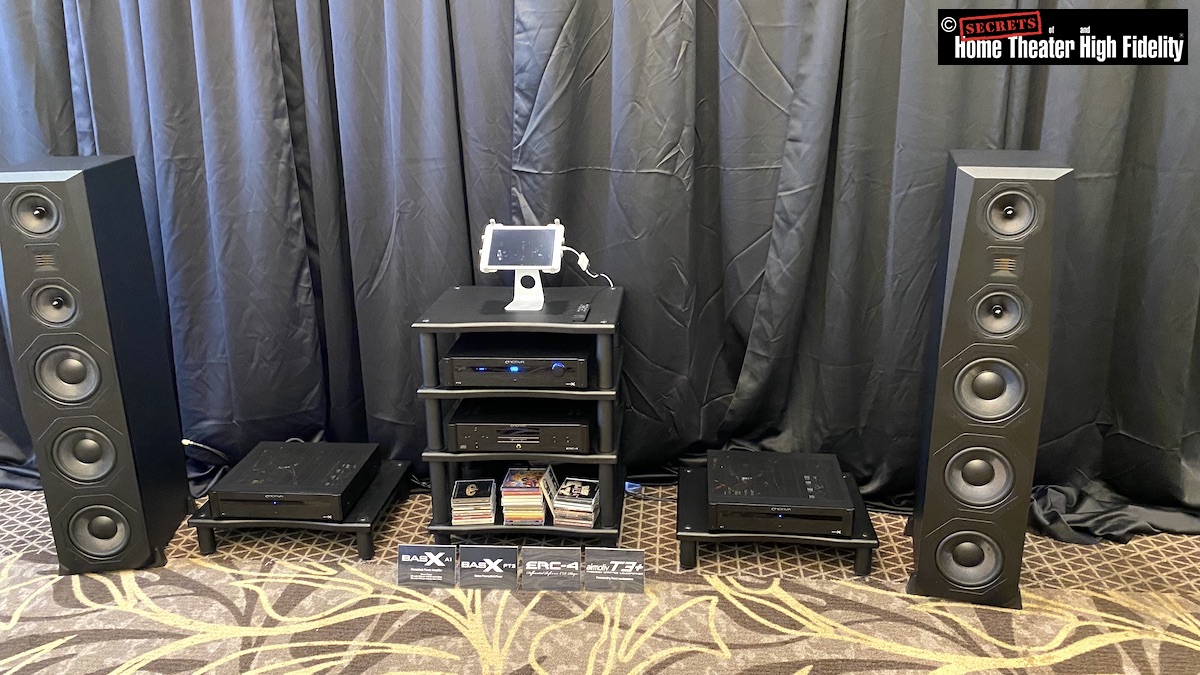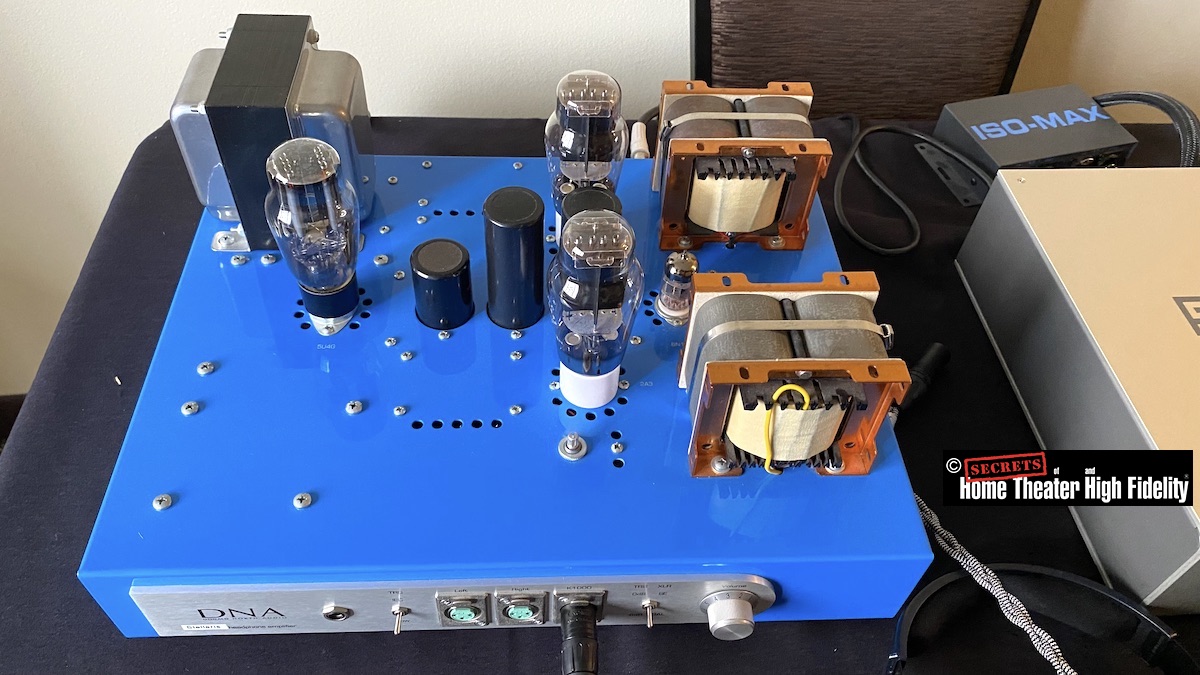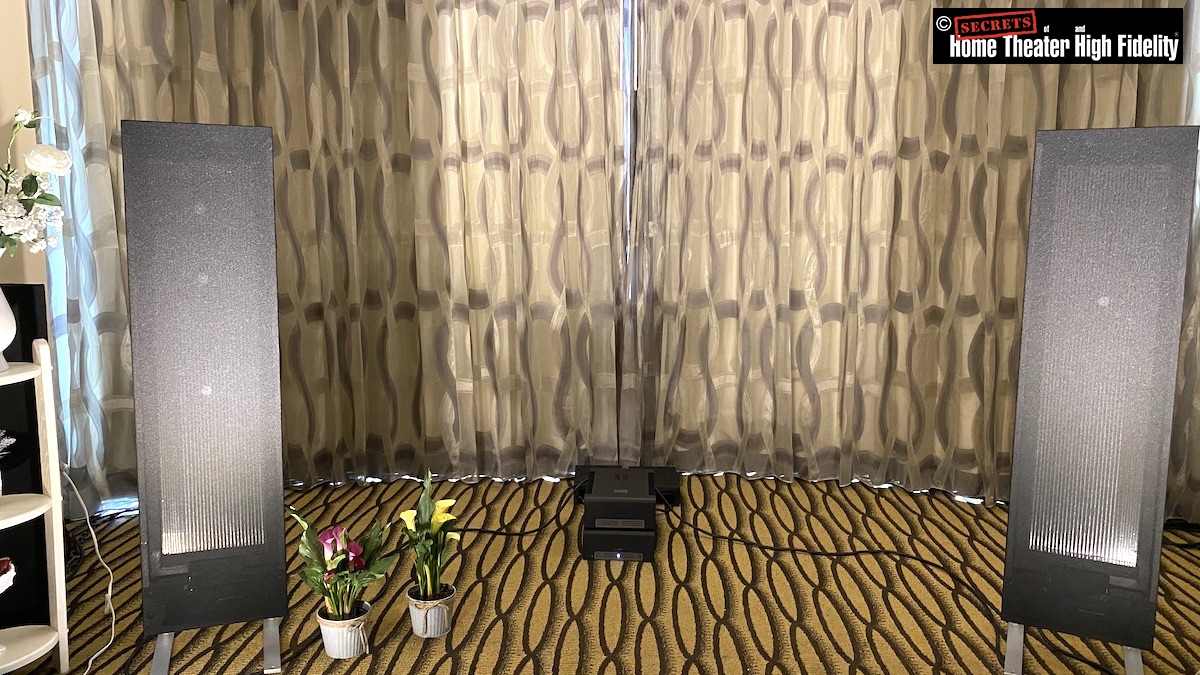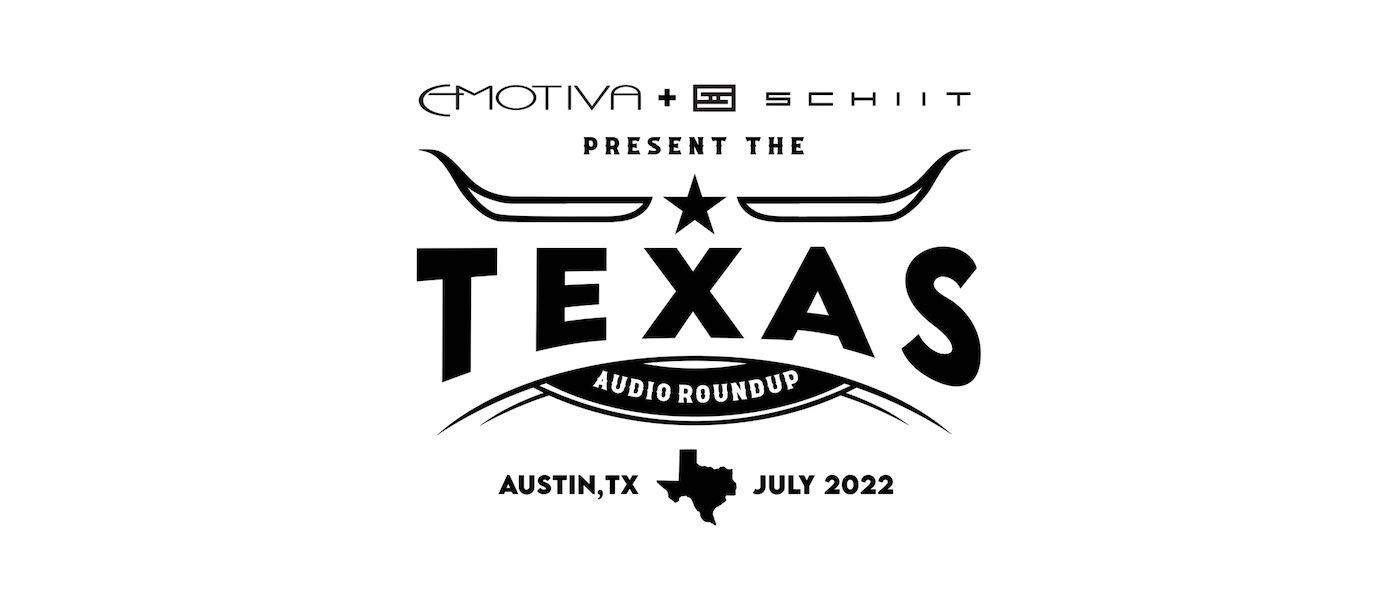
Held at the Doubletree Suites by Hilton Hotel in Austin, TX, the first-ever Texas Audio Roundup was the brainchild of the folks at Emotiva and Schiit. I attended the first day and attendance was quite robust. It was great to see and meet so many other like-minded audio enthusiasts in my own neck of the woods. Headphone listening, two-channel, theater, and gaming were all well represented.
The hosts of the event were rather generous. The folks from Schiit were giving out free t-shirts, and there was free food and tasty adult beverages in the afternoon. Granted, I had to drive an hour to get to Austin, but considering all it cost me to attend the event was the $20 hotel parking fee, I have absolutely nothing to complain about. I believe they organized this event as a test run to see what kind of interest and attendance they’d see, but my guess is that it was a smashing success and chances are good they’ll do it again next year. One can most certainly hope.
Jason Stoddard and his team, as usual, have been quite busy designing new, innovative, and affordable audio gear. While pretty much all of Schiit’s entire line of products was there for audition, there were a number of new components as well.
Schiit is also a big supporter of headphone listening for gaming. They had a room with a series of computers set up with gaming software and a variety of headphones and Schiit components. That room was good fun.
Secrets Sponsor
Schiit owner Jason Stoddard’s recent concern about the reliability of tube supplies is understandable, which is one of the reasons Schiit has re-introduced its own solid-state tube, the LISST, which is based on the MOSFET transistor. Schiit stopped selling the LISST a few years ago, but they will be reselling them again soon, and they can be used in the Freya+ preamplifier.
Schiit also designed a new version of the Freya to use nine-pin, or Noval B9A base, tubes. They’re calling it the Freya Noval, and it starts at $899US with tubes. The Freya Noval ships with 6N1Ps, but can also use 6922 or ECC88 tubes, for example, which are more easily available.
This is the new Bifrost 2/64. They’re calling it a “128-bit” DAC. You can upgrade a Bifrost 2 for $300US, which gets you a new hardware-balanced analog card with four TI DAC8812 D/A converters and an SD card with new firmware. And you can slide in the new card and install the firmware yourself. The cards are expected to ship in four to six weeks from now, as of July, 2022.
The Bifrost 2/64 is now a hardware-balanced DAC that uses four Texas Instruments DAC8812s for true balanced output. It measures better than the Bifrost 2. And it now includes a non-oversampling (NOS) mode, which you activate by clicking a button. I for one cannot wait to upgrade my Bifrost 2.
Here is the mighty Folkvanger, the $1800USD OTL/OCL triode headphone amplifier. With the Focal Clear MG headphones, the sound was very full and detailed yet still dynamic and warm. The amp felt like it has unlimited power to drive headphones. If you’re interested, you’d better order one soon, because Schiit is only making 250 of them.
And here is the Lyr+ combination headphone amplifier and preamplifier. Schiit redesigned the Lyr 2 to introduce two new technologies and make it modular. That means you can configure it with the ES9028 DAC, a phono preamp, or no module at all. That also means you can upgrade the cards when new versions become available. Its price starts at $599US. It also has a new “fusion architecture,” which means you can remove the tube and it will automatically switch into solid-state operation.
I was lucky enough to get some one-on-one time with Jason Stoddard. I had wanted to meet him for some time, and he was friendly and knowledgeable. That was true of the entire Schiit crew, come to think of it. And, to be honest, I spoke to Jason more about wine than anything else, and he taught me more about Texas wine in thirty minutes than I had learned after living in the state for over twenty years. Now I’m on the hunt to find a bottle of William Chris Mourvedre . . .
I had a great chat with Dan Laufman, the owner of Emotiva, as he showed me the innovations in some of his new products. He is clearly driven to constantly improve the quality of Emotiva gear while also keeping pricing reasonable. Emotiva is a direct-to-consumer company, so I can’t inspect any of their components in person unless I buy one. But seeing so many Emotiva components at once let me see just how much quality goes into their gear, and just how extensive their product range is.
Here is a closeup of some of Emotiva’s new line of cables. All of these are thick and felt substantial, but they’re finished in a very flexible rubbery material so they’re quite easy to move around. That’s always handy with thicker power cables. I was particularly impressed by the speaker cables. They had terminals with screw connectors so you could easily switch between a banana or spade connector. That is a great idea, especially if you’re used to switching between two pairs of speakers or amps with different terminals in your system. You can expect all of these new cables to be available for purchase in the near future.
This is a full two-channel system with the new Airmotiv T3+ full-range floor-standing speakers. One nifty feature about these speakers is that their tweeters are designed to be easily rotated 90 degrees, if you choose to use the speaker in a horizontal rather than vertical configuration, such as a soundbar.
Power came from the BasX A1 monoblock power amplifiers that put out 200W into 8 Ohms and retail for $449US each. The sources were an ERC-4 CD player running through the new BasX PT2 preamp/DAC/tuner combo. Streaming music was handled by an iPad. For a system that would probably cost less than $4000 in total, it sure made some very lively and engaging music.
Dan Clark was there with his line of headphones. I was unfamiliar with him or his headphones, but listening to his $4,000US Stealth planar magnetic headphones, powered by a Chord Hugo DAC, was a mind-expanding experience. I was immediately struck by the speed and focus of the Stealth headphones, but it was their timbre fidelity that impressed me the most. It was the best guitar body woodiness and nylon string twang I’ve ever heard through headphones. The Stealth headphones also feature a number of other very nifty features, such as the clever folding frame, the very secure wire connectors, and the attractive carrying case. They’re also great looking and comfortable to boot. You can read more about those headphones here.
Here is the Zampotech Shortest Way 51 single-ended triode headphone amplifier. It runs in Class A using two 6Z51P tubes. Those Amperex 6EJ7 signal tubes sounded great powering the HIFIMAN Arya Stealth Magnet headphones. The power and output transformers are hand-wound around specially selected steel alloys in the cores. In other words, a lot of thought, design, and craftsmanship went into this headphone amplifier. Anticipated pricing is $550 to $650, and it will be available in the Fall of 2022. Keep an eye out for a website for Zampotech soon.
This is the DNA Stellaris headphone amp. It uses bespoke Audio Note UK output transformers and Dueland CAST capacitors. Extremely liquid and powerful sound from this single-ended triode headphone amplifier. I was pleasantly surprised at the quality of sound coming out of the Sennheiser headphones on hand for the demonstration.
Magnepan Marketing Manager Wendell Diller was on hand to demonstrate the LRS+ speakers. They were powered by a pair of Schiit Vidar amps with a Marantz CD player as a source. The sound was very fast and clear and expansive, with a tremendous left-to-right soundstage. The back-to-front soundstage wasn’t particularly deep, but considering their $995US price for a pair, they really do punch outside of their weight class.
Secrets Sponsor
As for bass output, the LRS+ speakers were paired with two of the company’s prototype dipole woofer modules, one on each side of the room. The results did not disappoint. When pushed with a recording of Japanese o-taiko drums, the entire sound output was coherent with no deficiencies at lower frequencies. I could feel the air moving on my chest when the drums were struck.
Wendell also described his new “try before you buy” sales approach. That’s what the “plus” in the LRS+ name refers to. Magnepan will ship a pair of the speakers to you and cover the shipping, to essentially anywhere on the planet. After you have received them and put them in your system, Wendell will do a video conference with you to consult on how the speakers sound and how they could sound better. Then, if you want to return the LRS+ speakers or exchange them for something higher up in the Magnepan line, you just send them back. I think that’s a really great idea.
I acknowledge that there are probably some vendors and components I’ve omitted. There was much more on display than I could investigate in a single day. But I very much hope this event happens again next year. I’ll be sure to make plans to attend both days, and I’ll also be sure to bring along some friends. I hope you can do the same.



